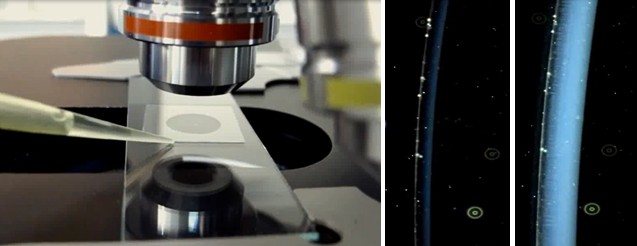Solvent-resistant membranes from the earth’s most abundant polymer
- English
- Türkçe
Cellulose is the most abundant biopolymer on earth and is insoluble in conventional solvents due to its strong inter- and intramolecular hydrogen bonds. This makes it a good candidate for applications requiring solvent resistance such as organic solvent nanofiltration.
While membrane processes are quite well-developed for separation and purification processes in aqueous media and gas mixtures, they are only recently finding applications in separations in organic solvent media. Such separations are ubiquitous in petrochemical, food and pharmaceutical industries and conventional separations are energy-intensive. Membrane separations can offer great energy savings if they can provide stable and predictable performance in solvent media.
In two recent papers by Çulfaz-Emecen Research Group, cellulose membranes that can withstand a variety of solvents such as dimethyl sulfoxide, n-methyl pyrrolidone, tetrahydrofuran, toluene, hexane, ethanol, acetone and ethyl acetate were developed (Sukma et al., 2018). Membranes were prepared by phase inversion using the ionic liquid 1-ethyl-3-methylimidazolium acetate (EMIM]OAc) as solvent, acetone or dimethyl sulfoxide as cosolvent and water or ethanol as nonsolvent. Rejection of a probe molecule (Bromothymol Blue, 624 Da) was increased up to 94% by tuning the fabrication conditions. The rejection for dyes of different charge and polarity was strongly dependent on solute-membrane interactions, where strongly sorbed dyes were not rejected and vice versa.
Kinetics of the phase inversion process in cellulose solutions was investigated by online observation of the coagulation front under a microscope (Durmaz et al., 2018). It was observed that the phase inversion front is slower when the nonsolvent is ethanol rather than water. However, despite an order of magnitude difference in viscosity, the rate is similar when the solvent is pure [EMIM]OAc or a mixture of [EMIM]OAc and DMSO.
It was also shown that increasing DMSO content in the cellulose solutions decreased crystallinity, and membranes with higher crystallinity had higher dye rejections.

Measuring advancement rate of the phase inversion front. For more information, see the video below or see Durmaz et al., 2018.
Articles:
F.M. Sukma, P.Z. Çulfaz-Emecen, Cellulose membranes for organic solvent nanofiltration, Journal of Membrane Science, 545, 2017, pp. 329-336.
E.N. Durmaz, P.Z. Çulfaz-Emecen, Cellulose-based membranes via phase inversion using [EMIM]OAc- DMSO mixtures as solvent, Chemical Engineering Science, 178, 2018, pp. 93-103.
This study was funded by TÜBİTAK Grant no. 115M520.
